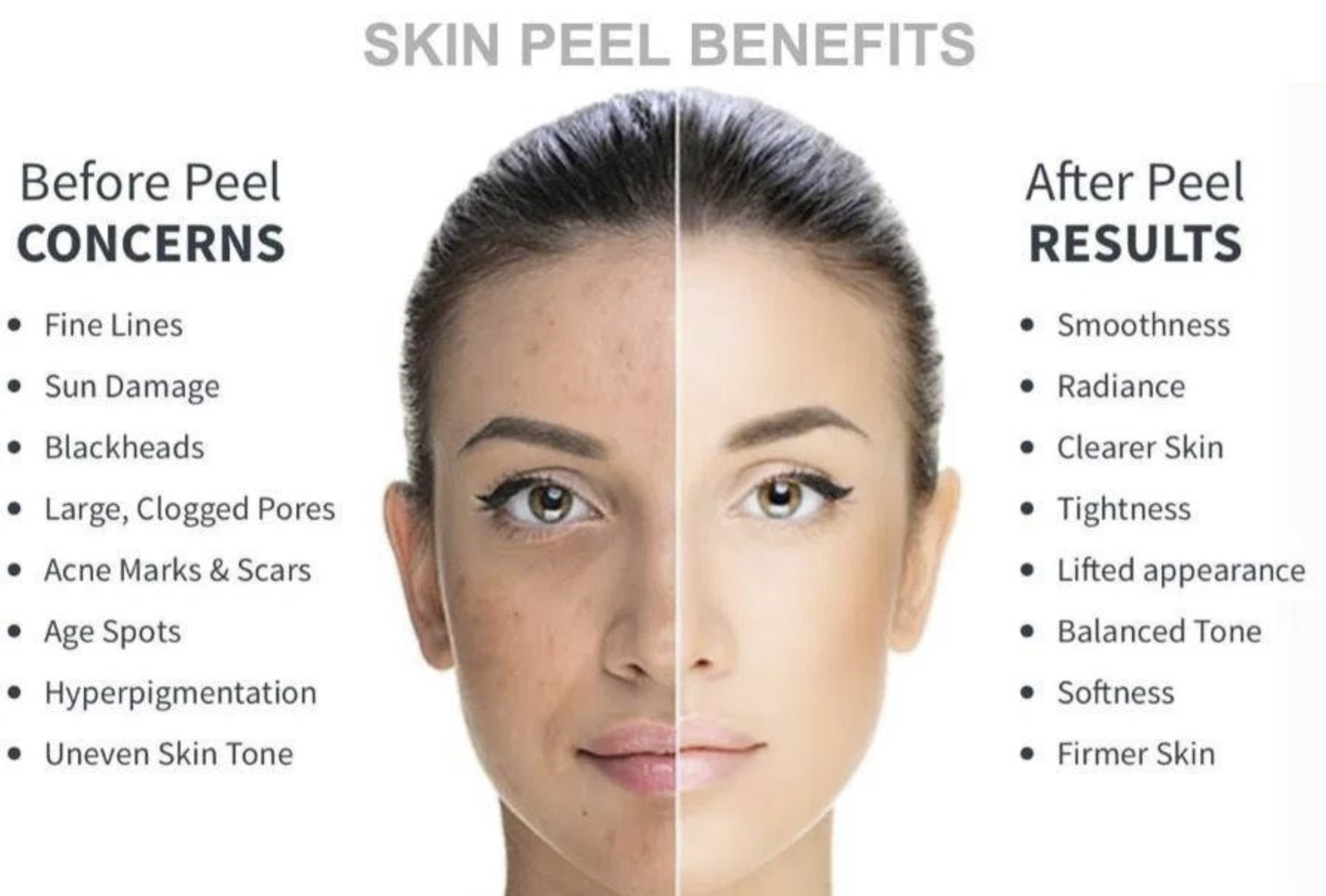What Are Chemical Peels? Benefits, Types, and What to Expect

If you’ve ever searched for ways to refresh your skin, reduce acne scars, or brighten your complexion, chances are you’ve come across chemical peels. Once exclusive to dermatology clinics and high-end spas, chemical peels are now widely available—and even safe to use at home, thanks to innovative skincare formulations.
In this guide, we’ll walk you through what chemical peels are, how they work, their benefits, the different types, and what to expect before and after treatment.
What Is a Chemical Peel?
A chemical peel is a cosmetic treatment that involves applying a chemical solution to the skin to exfoliate and remove dead skin cells. The peel stimulates skin regeneration, revealing smoother, healthier, and younger-looking skin underneath.
The depth and intensity of a chemical peel depend on the type of acid used and its concentration. Some peels work on the surface layer (epidermis), while others penetrate deeper into the dermis to address more advanced skin concerns.
Benefits of Chemical Peels
Chemical peels offer a wide range of benefits, making them a versatile option for improving many skin concerns. Here’s what they can help with:
✅ 1. Reduces Fine Lines and Wrinkles
By stimulating collagen production and removing damaged surface skin, chemical peels can minimize the appearance of fine lines and early signs of aging.
✅ 2. Clears Acne and Breakouts
Salicylic acid and other acne-fighting peels help unclog pores, reduce inflammation, and prevent future breakouts.
✅ 3. Fades Hyperpigmentation and Dark Spots
Chemical peels are excellent for treating sun spots, melasma, and uneven skin tone. They help fade pigmentation by accelerating skin cell turnover.
✅ 4. Improves Skin Texture and Tone
Peels remove rough, dull skin to reveal a smoother texture and brighter, more even complexion.
✅ 5. Minimizes Acne Scars
Medium and deep peels can help fade post-acne scars and discoloration by reaching deeper skin layers.
Different Types of Chemical Peels
Chemical peels are categorized by their depth: superficial (light), medium, and deep. Each type targets different skin concerns and has different recovery times.
🔹 1. Superficial (Light) Peel
-
Ingredients: Alpha-hydroxy acids (AHA) like glycolic or lactic acid, or beta-hydroxy acids (BHA) like salicylic acid
-
Best For: Mild acne, dull skin, uneven tone
-
Downtime: None to 1–2 days of mild flaking
-
Frequency: Every 2–4 weeks
🔹 2. Medium Peel
-
Ingredients: Trichloroacetic acid (TCA), stronger glycolic acids
-
Best For: Age spots, moderate wrinkles, acne scars, pigmentation
-
Downtime: 5–7 days with visible peeling
-
Frequency: Every 3–6 months
🔹 3. Deep Peel
-
Ingredients: Phenol or high-concentration TCA
-
Best For: Deep wrinkles, severe sun damage, deep acne scars
-
Downtime: 1–2 weeks (significant peeling, redness)
-
Frequency: One-time or every few years (under professional supervision)
Are Chemical Peels Safe?
When done correctly, chemical peels are safe and effective for most skin types. Superficial peels are the safest option for at-home use and for people with sensitive or darker skin tones.
However, people with the following conditions should consult a dermatologist before undergoing a peel:
-
Active cold sores or skin infections
-
Pregnancy (some peels are not safe)
-
History of keloid scarring
-
Use of certain medications like isotretinoin
Chemical Peels for Different Skin Concerns
| Skin Concern | Recommended Peel Type |
|---|---|
| Acne | Salicylic acid peel |
| Hyperpigmentation | Glycolic acid, TCA, lactic acid |
| Fine lines/wrinkles | TCA, glycolic acid, phenol |
| Sensitive skin | Lactic acid, mandelic acid |
| Oily skin | BHA/salicylic acid peel |
What to Expect During and After a Peel
🔸 Before the Peel:
-
Avoid exfoliants and retinoids for 1 week
-
Stay out of direct sun
-
Do a patch test if using a new product
🔸 During the Peel:
-
You may feel tingling, stinging, or warmth
-
The peel is left on for a few minutes, then neutralized or removed
-
Professional peels may include pre-treatment and aftercare kits
🔸 After the Peel:
-
Expect redness, dryness, and peeling (depending on peel depth)
-
Avoid sun exposure and apply SPF daily
-
Don’t pick or peel flaking skin—let it shed naturally
-
Use gentle, hydrating products
Recovery time varies, but most people can return to daily activities within a day (light peels) to a week (medium peels). Deep peels may require more time and should be supervised by a professional.
Can You Do Chemical Peels at Home?
Yes! There are many at-home chemical peel kits formulated with lower concentrations of acids for safe and effective exfoliation. Look for reputable brands and start with gentle peels. Always follow instructions and patch-test first.
One popular at-home peel is BienPeel 35% TCA, a bi-phase formula that offers instant glow and deep skin renewal with no downtime. It’s great for acne, scars, and dull skin.
Final Thoughts: Is a Chemical Peel Right for You?
Whether you're dealing with acne, dull skin, or the early signs of aging, chemical peels can offer dramatic improvements with minimal effort. From a gentle refresh to a deeper rejuvenation, there’s a peel for nearly every skin concern.
Looking to try one? Explore our collection of professional-grade chemical peels and start your journey to clearer, brighter, and healthier skin.
📌 Pro Tip: Always Wear Sunscreen!
After a chemical peel, your skin becomes more sensitive to the sun. Daily SPF 30+ is non-negotiable to protect your fresh new skin and prevent pigmentation.



Leave a comment